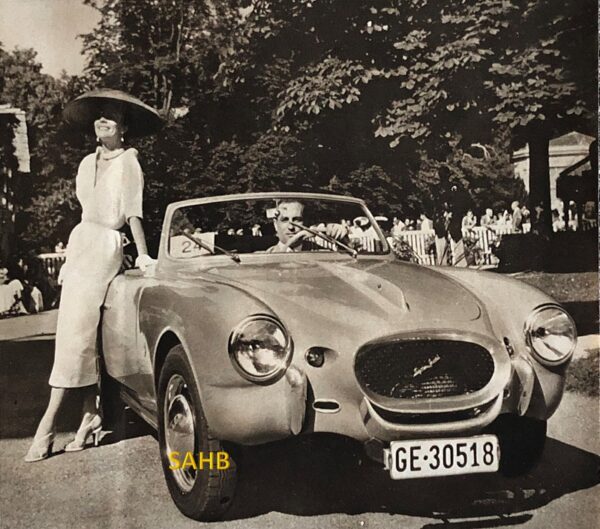
The origins of the car in our Snapshot date to 1946 with a lightweight saloon designed by the engineer Jean Albert Grégoire and first exhibited as the AFG (Aluminium Français Grégoire) Dyna at the Paris Motor Show in that year.
Aware of postwar French austerity and government enthusiasm for expanding the strategically important aluminium industry, the Panhard company, which had in the 1930s made expensive six- and eight-cylinder saloons, purchased the rights to build the smaller Grégoire-designed car. This made them one of the most loyal followers of the Pons Plan that permitted and encouraged the manufacture of smaller cars.
The chassis and engine of the Dyna turned up in the Panhard Dyna Junior sports car first seen in 1951 and built by Panhard from 1952 to 1956. Slightly over 4,700 were built. In early 1951, Joseph Bell Ferguson, the brother of Harry Ferguson, approached Panhard with a proposal to build a small sports car for the American market. To reduce design costs and speed development the Dyna Junior was built with the chassis and front-wheel-drive powertrain from the Dyna X.
The Dyna Junior may have been a sports car, but it had little pretence to elegant styling. It was characterised by simple lines, and exterior decoration was limited to the grille inherited from the Dyna X. The car had exposed hinges on the trailing edge of the two passenger doors that opened “suicide”-style. There were no external door handles, so opening the door required reaching in through the sliding plastic side windows to reach the interior latch. There was likewise no external boot lid, with the rear storage compartment accessed by folding down the backrest of the two-place bench seat. The interior was spartan, with a single centre-mounted dial for the speedometer and a gearshift lever sprouting from the dashboard as in the Dyna X. The Dyna Junior was powered by an air-cooled two-cylinder OHV boxer engine of 745 cc, producing 33bhp at 5,000 rpm, giving a maximum speed of 75mph.
The Dyna Junior was simple, light and reasonably rapid – and thus ripe for the attentions of specialist coachbuilders. Enter, in 1953, the Swiss company Ghia-Aigle, which created two convertibles on the Dyna Junior for the 1953 Geneva Show; our Snapshot shows one of them. Ghia-Aigle was founded in 1948 as Carrosserie Ghia S.A. in Aigle, Switzerland, by P. P. Filippi of Turin. It originally operated as a subsidiary of Carrozzeria Ghia, becoming independent in 1953 and temporarily located between 1954 and 1958 in Lugano. Ghia-Aigle designers were mainly from Ghia, including Mario Boano (1948–51), Giovanni Michelotti (1948–57), and Pietro Frua (1957–60). Our example was created by Michelotti. The photograph and its original caption prove that the car was entered in a genuine Concours d’Elégance: the make, model and designer were briefly mentioned, but so was the Haute Couture: “White outfit with large black hat.”
Image courtesy of The Richard Roberts Archive: www.richardrobertsarchive.org.uk







Leave a Comment